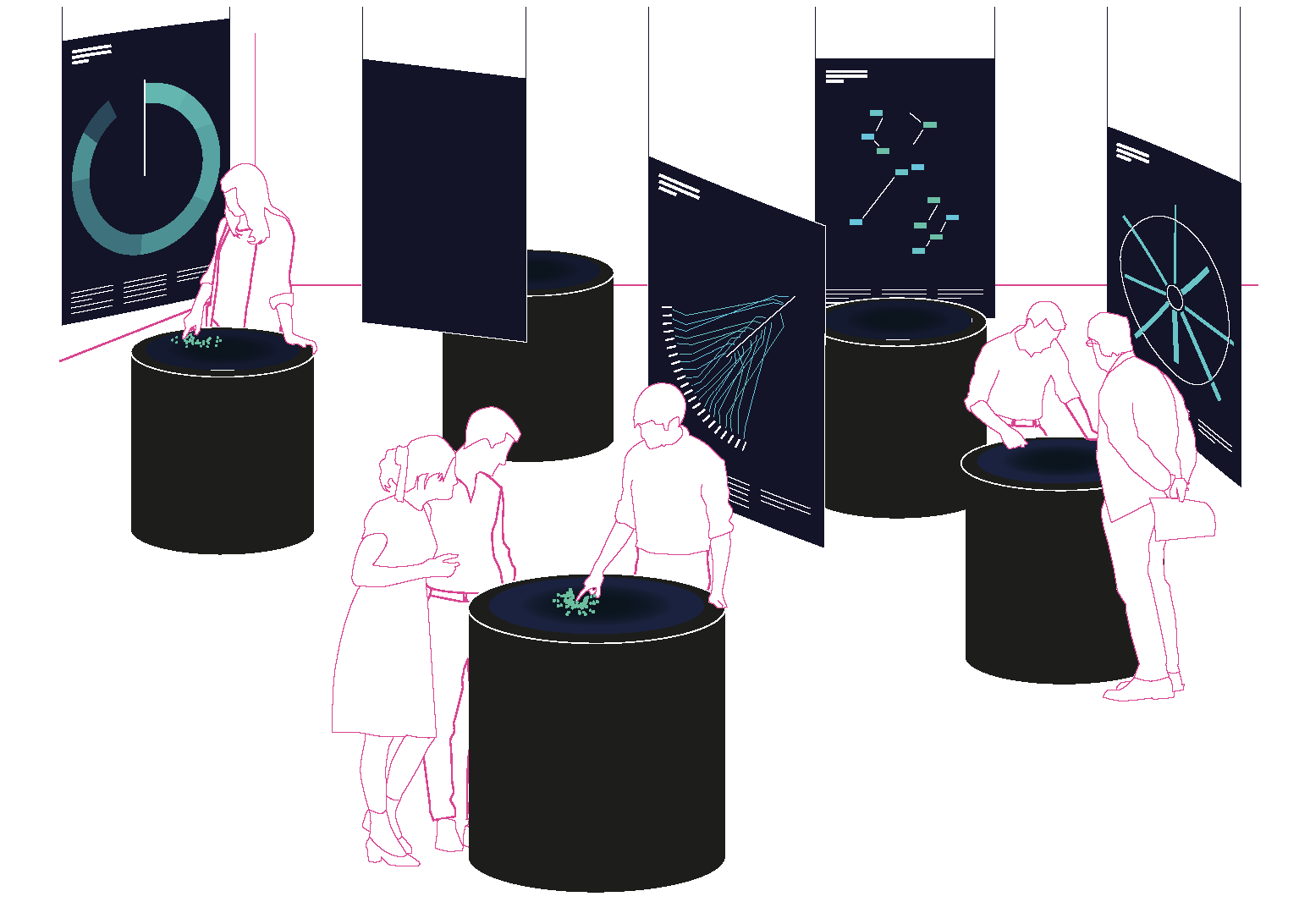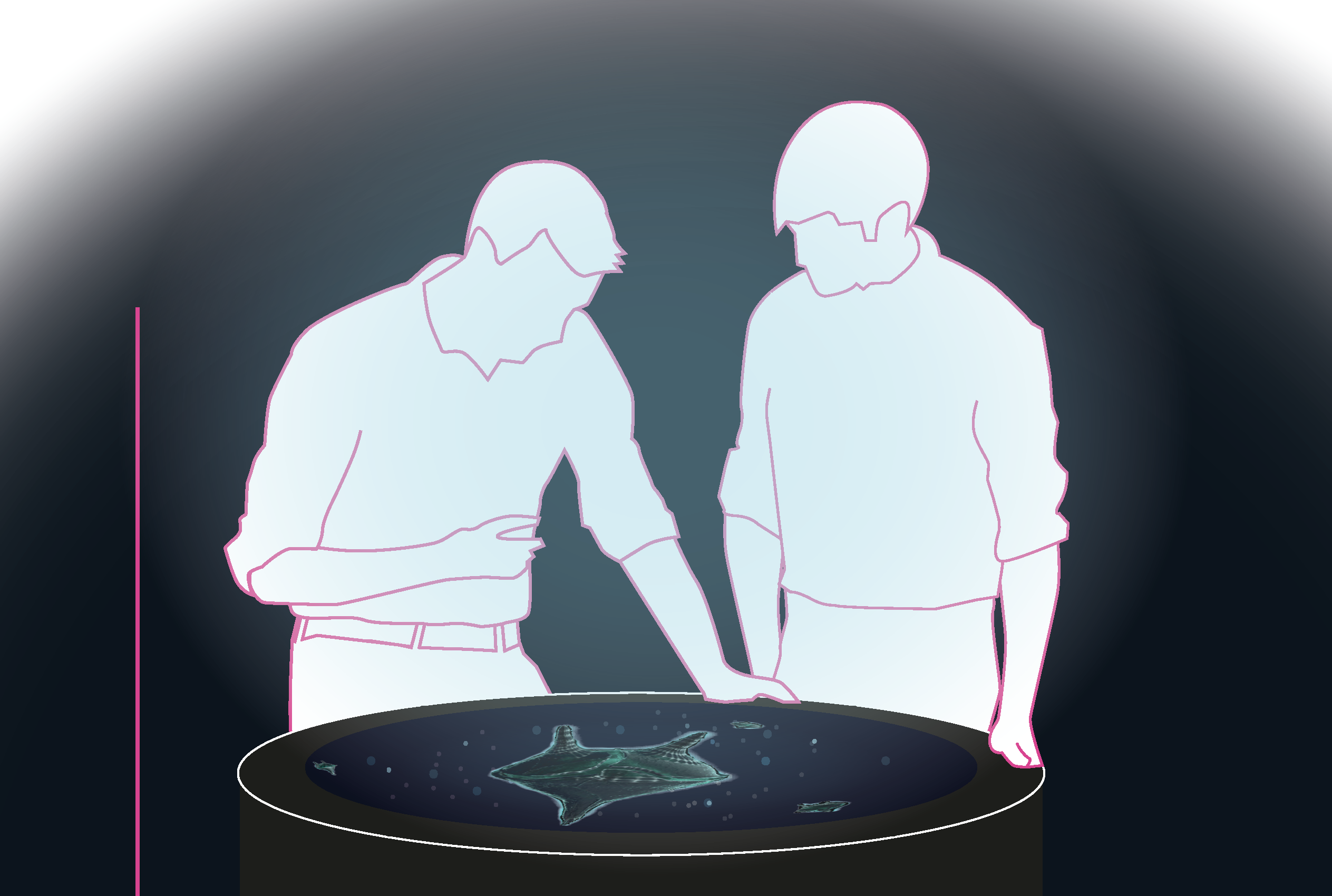Luminous Sea
This concept of an interactive science exhibition was my B.A. thesis project at the Muthesius University of Arts and Design in Kiel, Germany.
The idea behind it is that visitors get the chance to experience and discover the incredible biochemical process of bioluminescence in the ocean. I designed a flexible and transportable exhibition concept that would allow a presentation to a wide audience.
Technical details: Designed and executed in Cinema 4D, Adobe Illustrator, After Effects, wood and glas
Typefaces:
ITC Avant Garde Gothic Pro
Gill Sans MT Pro
Snell Roundhand
The idea behind it is that visitors get the chance to experience and discover the incredible biochemical process of bioluminescence in the ocean. I designed a flexible and transportable exhibition concept that would allow a presentation to a wide audience.
Technical details: Designed and executed in Cinema 4D, Adobe Illustrator, After Effects, wood and glas
Typefaces:
ITC Avant Garde Gothic Pro
Gill Sans MT Pro
Snell Roundhand
The spatial exhibition concept
Several interactive and cylinder-shaped terminals are placed freely in the exhibition room and adjusted accordingly to the architecture. Each terminal shows a different organism and its usage and advantage of bioluminescence. To lead the audience through the room and to provide further information on the subject I designed informative posters that could hang from the ceiling in different heights and angles. This should also create a sense of floating through the depths of the sea.
 Concept drawing 1
Concept drawing 1The interaction design concept
The interactive terminals (which I actually built to demonstrate the production design) should remind of diving vessels or portholes so the visitors could look through them and have an immersive experience.
First there would be nothing more to see on the displays as a dark blue surface on which light sources would appear and attract the visitor’s attention.
First there would be nothing more to see on the displays as a dark blue surface on which light sources would appear and attract the visitor’s attention.


If the surface gets touched the scene will change and animate into revealing the specific animal that emitted the light. Also an informative layer will pop up and provide more insights about the advantages for the creature to use bioluminescence.
Based on the research of marine biologist Steven Haddock I identified five different use-cases:
- Camouflage
- Attraction of prey
- Confusing predators
- Distraction
- Communication
Based on the research of marine biologist Steven Haddock I identified five different use-cases:
- Camouflage
- Attraction of prey
- Confusing predators
- Distraction
- Communication
The visual design concept
For my presentation I refined one concept which was the theory that a certain phytoplankton uses bioluminescence as a means of warning the swarm if a predator would attack (”burglar alarm”). If one individual would start to glow the ones next to it would start as well in a biochemical chain reaction. It is believed that the cloud of light eventually makes it harder for the predator to identify a clear target.
I used Cinema 4D for the modeling and animation of the phytoplankton “protoperidinium bipes”.
I used Cinema 4D for the modeling and animation of the phytoplankton “protoperidinium bipes”.

Another focus was the data visualisation for the poster series. For the final presentation I executed two versions:

 Each poster should not just provide information but also have close visual relation to the fragile and incredibly beautiful creatures that live in the deep sea. The typeface I chose for the scale (Snell Roundhand) should resemble old science visualisations and contrast with the linearity of the headline’s ITC Avant Garde.
Each poster should not just provide information but also have close visual relation to the fragile and incredibly beautiful creatures that live in the deep sea. The typeface I chose for the scale (Snell Roundhand) should resemble old science visualisations and contrast with the linearity of the headline’s ITC Avant Garde. All visualised data came from actual datasets conducted by Steven Haddock et al. and published in “Bioluminescence spectra of shallow and deep-sea gelatinous zooplankton” (1999) and “Bioluminescence in the sea” (2009).
All visualised data came from actual datasets conducted by Steven Haddock et al. and published in “Bioluminescence spectra of shallow and deep-sea gelatinous zooplankton” (1999) and “Bioluminescence in the sea” (2009). Even though they might not be entirely legible the graphics still remain interesting and mysterious just as the topic.



 oncept drawing 1
oncept drawing 1